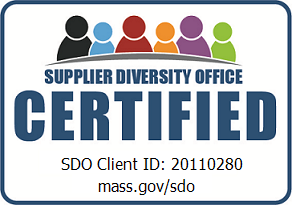The confluence of events is nearly overwhelming: a once-in-a-century pandemic, a once-in-a-generation movement for racial equity and justice, and a presidential election that is already proving to be unlike any other in our lifetime. The turbulence created by each of these epochal episodes is impacting every corner of American life. But one could argue that no sector’s foundations are being more fully shaken than that of K-12 and higher education.
As a result of the COVID-19 pandemic, primary schools, high schools, colleges, and universities have had to completely reimagine and redesign how they operate in a matter of months to successfully reopen. But have they also made the corresponding, critically necessary changes to how they communicate amid the ever-present COVID-19 threat? The Castle Group’s recent work with clients has illuminated an array of pandemic-related issues that education-focused public relations and crisis communications efforts must address.
A Positive COVID-19 Diagnoses
Few if any schools, colleges, or universities will make it through the fall without a single positive COVID-19 result. Indeed, most institutions have already had to communicate such a result, and many have had to inform their communities about dozens or hundreds of cases.
Successful positive diagnosis notifications are sent promptly – within hours of the school or college receiving the test result – and directly and succinctly communicate the most pertinent information while protecting the privacy of students, faculty, and staff. Such notifications should detail the steps the institution has already taken, is in the process of taking, and will soon take to protect health and safety on campus. They should also include relevant school official contact information for the students and parents who will inevitably and understandably have additional questions and concerns.
In most cases, communication should not cease after that first, initial test result notification. Students and parents want to know that health policies were followed, procedures were completed, and that the positive case is not the beginning of a wider outbreak within the school community. In the absence of such follow-up communication, speculation and fear are more likely to spread.
Health Guideline Specificity
Every school, college, and university has told their communities, time and again, that they are adhering to the latest health and safety guidelines. But which guidelines? And who wrote them?
Recommendations on how to minimize virus transmission are constantly evolving, and there are often nuanced variations between the recommendations issued by local, state, and federal public health officials. Even the Centers for Disease Control and Preventions (CDC) regularly revises and refines its vastly influential guidance.
Educational institutions must be explicitly clear about which health guidelines are governing their protocols and which entities issued them. If a school is relying primarily on state guidance, it should clearly assert that in pandemic-related notifications. When parents or other stakeholders question a school’s decision-making, the institution should be able to point to the specific recommendations that are guiding that decision-making. Each situation involving a suspected or positive case of COVID-19 is unique. Schools and colleges should maintain consistency and clarity to reassure their communities that they are effectively managing the risk on their campuses.
Website Dashboards
Schools and colleges are beginning to understand that it is impossible to send individual communication each and every time a student, faculty, or staff member tests positive. But how do you maintain transparency while avoiding flooding the inboxes of your community members?
Posting and regularly updating basic COVID-19 testing data on a publicly accessible dashboard on the school’s website may provide part of the answer. This enables community members to easily track the situation and may decrease inquiries from students, parents, and staff who are closely tracking the pandemic on campus.
However, it’s important to note that dashboards are not cure-alls. Nor are they appropriate in all circumstances and for all institutions. For example, if a school or college is only testing its community members intermittently or on an as-needed basis, positive test results are likely to comprise a larger portion of the total number of tests administered. In these cases, posting raw data in a public manner could overstate the extent of the transmission on campus.
Constant Change
The only constant in 2020 is change, and this is certainly true for schools and colleges. A campus that appears to have contained the pandemic one week could fall victim to a widespread outbreak mere days later. Educational institutions should communicate in a manner that helps students, parents, and staff understands the need for continuing flexibility and perpetual adaptation as campuses react and respond to shifting data and recommendations – circumstances can, and will, change.
Castle’s crisis communications team can help ensure your institution’s communications follow the right sequence and cadence amid an uncertain environment, as well as navigate any number of critical and sensitive situations that are likely to arise during the school year.























